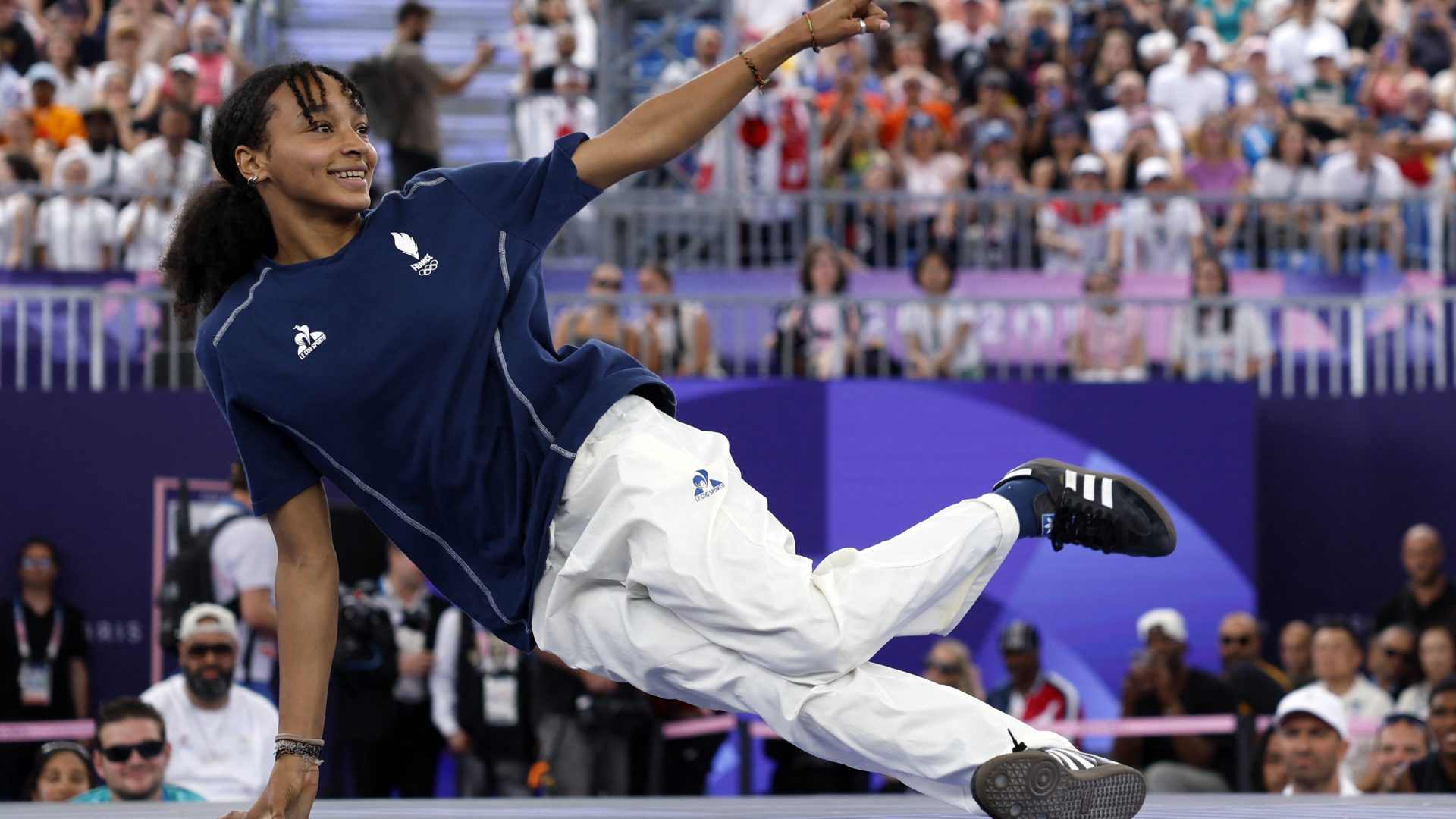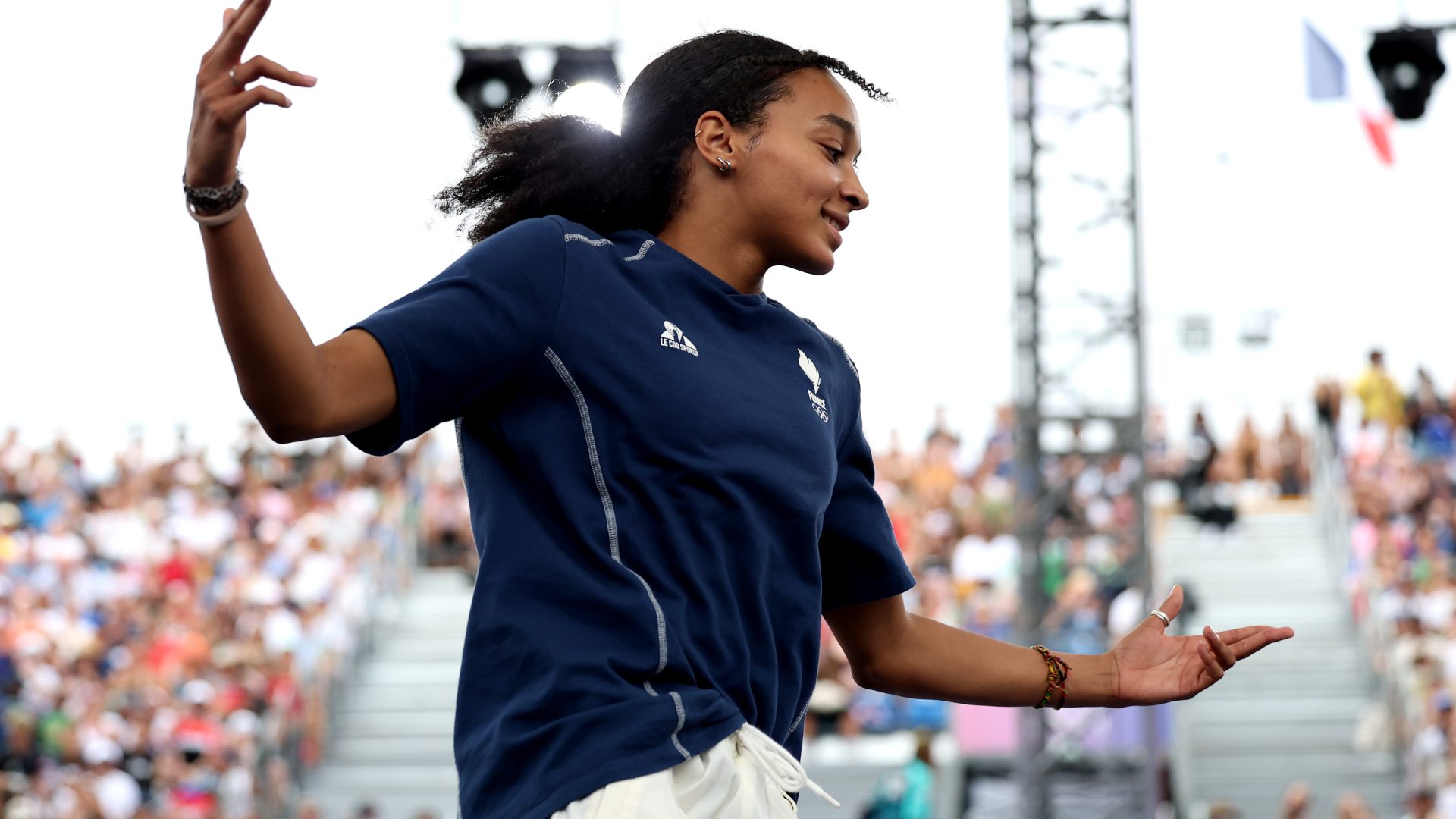
For the first time in Hip-Hop’s history break dancing is seen as more than just an art form but athletic talent in the mainstream world as it debuts at the 2024 Olympics in Paris. The constant influence of hip-hop continues to expand past something beyond the 1980s. From DJ Kool Herc’s underground jams in the Bronx to the Olympic stage, hip-hop continues to break boundaries.
Four Team USA breakers, Jeffery Louis, Sunny Choi, Victor Montalv, and Logan Edra, will bust a move on the world stage, battling for gold. A total of 16 B-girls and 16 B-boys from around the world will head up one-on-one, narrated by a live DJ. “It’s definitely a good thing that they have B-girls and B-boys in the Olympics to show off the gifts that they brought to the planet,” says the founder of the Zulu Nation, Afrika Bambaataa.
Breaking is part of the four elements of Hip-Hop: DJing, MCing, breakdancing, and graffiti. They are the bloodline of the culture. Hip-hop started as an act of resistance from the poverty-stricken boroughs of New York. Black people gathered together to shake off the political drama of their lives and have a good time. In 1973, DJ Kool Herc would throw block parties to establish respect in the hood. He used his sound system to set the mood, playing James Brown tunes and spinning over the funky breakdowns in the beat. Every time the beat dropped, people would bust out in aerobatic kicks and spins influenced by boogaloo pop locking, Karate, and Kung Fu movies.
Before any dance groups were formed, Kieth and Kevin Smith, known as the Legendary Twins, went up against each other at Herc’s parties. He called them Bronx boys, or b-boys, and b-girls for short. A routine might begin with top rocking and shuffles, followed by a breaker spinning or wiping down with their legs. When they get to the floor, they’ll do six, three, or four steps of footwork before moving on to different transitions. Breakers initiate a power move, execute a flair or a head spin, and then freeze toward their opponent or the audience. Now that Breaking is taking the global stage, viewers get a first-hand look into such a sacred underground culture. “The Olympics is using Hip-Hop to stay hip,” says Team USA Breaker Alex Diaz.

Breakdancing’s debut at the Olympics sparks fresh discussions on the intersection of dance and athleticism, showcasing the sport’s physical demands and artistic expression. This platform elevates breakdancing from a cultural phenomenon to a recognized athletic discipline, bringing attention to the diverse backgrounds and styles within the community. It also emphasizes the fusion of creativity and physical prowess, celebrating the artistry and athleticism of the dancers.
Cross One was a board member of the Breaking Committee at the 2018 Buenos Aires Youth Olympics who helped come up with the rules that dictate the winners. “When breaking made the Olympics, it felt like my time was done,” he says. He fought hard to keep the Hip-Hop authenticity in the Olympic Games, such as being referred to as their street names and not their government names
There will be nine judges at the Olympics. Dancers are scored on their vocabulary, which means the different moves they know without repeating, technique, execution, and musicality. The judges will have iPads with a tinder like swiping system. According to Diaz, they’ll swipe to the blue side or the red side based on preference. When the battle is done, the LED screen behind the judges will show the crowd how the judges voted, points will be counted, and a winner will win.

Break dancing’s resurgence also brings financial revenue to the sport. Breaking is now a form of income, and breakers can use their time training as a full-time job. They are also being recognized by more brands than just Red Bull and Monster, but brands like Nike and Reebok.
As break dancing gains global recognition, it redefines the boundaries between performance art and competitive sports. Hip-hop has grown into a positive and inclusive form of expression. More girls are breaking than ever and are the face of the sport. Still, now that this new chapter will bring more eyes onto the culture, breakers continue to push to maintain the art form of break dancing. “Being in the Olympics the first time it’s been referred to as a sport. It’s always been referred to as an art,” says Deon Thomas, the owner of Breaking Circles, a dance studio in Utah. “The hope is that we don’t lose the art.”
About the Author: Nabou Ramu, born Seynabou Clark, is an afrocentric journalist who covers all things art, culture, and business. The griot’s word is an album for archiving and preserving time and memory within those beats. She is jazz to classical, documentaries to cinema, a ratio of soulful truth and naturally practiced. When she’s not writing, she is playing her saxophone, La Sirene, or painting.